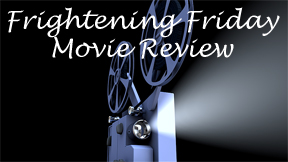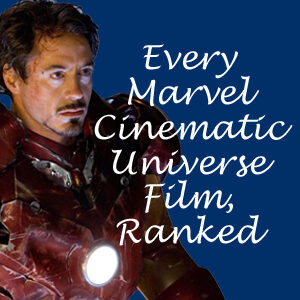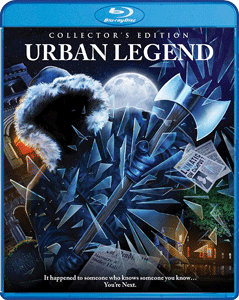“Urban Legend,” a dumb but kinda classic film from the late Nineties slasher boom, could exist in 1998 but not five years later. Much of writer Silvio Horta’s plot advances via Pendleton University friends Natalie (Alicia Witt) and Paul (Jared Leto) being unable to quickly and efficiently find information.
Natalie suspects Damon (Joshua Jackson) has been murdered by the parka-clad Urban Legend killer, but he could be on a snowboarding trip. But her roommate, Tosh (Danielle Harris), is always using the room’s dial-up internet, so she can’t call the resort to find out. Cellphones aren’t mainstream yet, so she can’t call Damon directly.
Even more remarkably, reporter Paul can’t research the Stanley Hall Massacre of 25 years earlier to find out if it was real or an urban legend. It turns out the massacre did happen and was thoroughly reported. It’s just that the 1973 Pendelton University yearbook is missing from the archives, and he can’t find a back issue of the school paper for that week. Once he does, he learns the story.

“Urban Legend” (1998)
Director: Jamie Blanks
Writer: Silvio Horta
Stars: Jared Leto, Alicia Witt, Rebecca Gayheart
For a split second, “Urban Legend” is a commentary on authorities’ control of the media. But it quickly goes back to being a themeless mystery-slasher.
Pre-information age?
Granted, I’m currently looking up information about the movie on IMDb (I didn’t take notes or remember the characters’ names, the school name or the building name), so I should check my 2022 privilege.
And actually, I have a soft spot for “Urban Legend” for being such a time capsule of 24 years ago. The technological changes since then remind me this movie is almost as far in the past as the Stanley Hall Massacre is to the characters.
Looked at as a piece of entertainment, director Jamie Blanks’ film starts extremely strong and finishes rather weakly. (SPOILERS FOLLOW.) The cold open is the legitimately legendary “There’s someone in the back seat!” scene. If you look closely, you can see a dark figure shifting in the back seat before he/she strikes down the first victim, Natasha Gregson Wagner’s Michelle.
After the final-act reveal of the killer, which is rather predictably Natalie’s friend Brenda (Rebecca Gayheart), the wrap-up takes forever and is increasingly ridiculous. It relies on Natalie and Paul becoming dumber than ever – most notably when they drive off before checking on the corpse of the killer who has fallen from a window. Brenda (now more invincible than Michael Myers) is in their back seat, natch.
The heroes kill her again, and then she still pops up in a final stinger. Audiences of any era are right to groan.
Self-interested students
I saw “Urban Legend” when it came out, and in my review of the 2000 sequel, I wrote: “The original is initially entertaining but doesn’t hold up on repeat viewings.” I stand by that statement when analyzing the film in terms of plausible plot happenings and character behavior.

Setting aside the technology of internet research and cellphones, one could argue “Urban Legend” hasn’t aged well because there’s an odd innocence to its crassness. When Damon fakes dying from Pop Rocks and Pepsi in front of the urban legends lecture class, I think we really are supposed to think he’s dying. Today’s viewer wouldn’t fall for that for a half-second.
Every character is self-centered, and I think this was an attempt to portray “cool”; it was cinema’s unfortunately exaggerated take on Nineties disaffected young people. Even the seemingly decent Natalie participated in a ridiculous “flashing your headlights” prank in high school.
Reporter Paul is the closest to being a decent person, as he’s the only one working to spread awareness of the serial killer. The college actively tries to hide it, hence why he can’t even find Stanley Hall Massacre information. But even Paul admits part of his motivation is to build up good clips to land a good job.
Pre-nostalgia?
“Urban Legend” is stuck in a small window of history wherein it’s meta about pop-entertainment but not nostalgic about it. Horta includes references to Jackson being on “Dawson’s Creek” and Gayheart being in Noxzema commercials.
Robert Englund and Danielle Harris are good actors, but I bet they were cast in part because they were known from the “Nightmare on Elm Street” and “Halloween” films, respectively. I bet the “Urban Legend” filmmakers thought slashers were cool again because young audiences viewed the genre as winking fun.
Through a 1998 lens, Englund’s and Harris’ roles here (he’s a professor of urban legends, she’s a goth chick) are smartly ironic, whereas their Eighties slasher roles were silly – they weren’t yet seen as classic trope-codifiers.
The two sequels, in 2000 and 2005, move into the internet age, when yanking yearbooks and newspapers from the archive shelves is no longer a viable cover-up strategy. In 1998, this plot was barely plausible, and of course now it’s funny.
But it’s the lazy self-centeredness of the students and broad self-awareness of those working on the film that make “Urban Legend” shallow and mediocre. On the other hand, this is so typical of late-Nineties slashers that this becomes a fascinating text to analyze 24 years later (when a reboot is in the works, natch).

